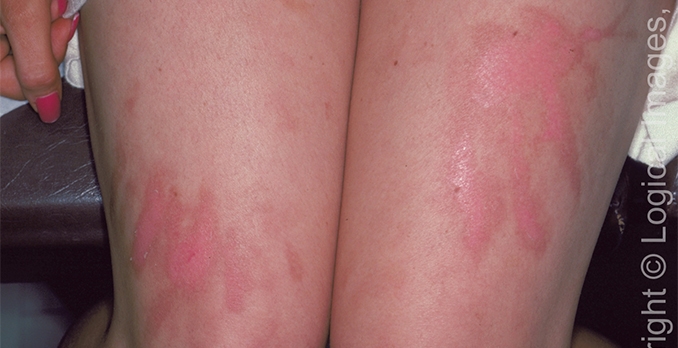
The correct diagnosis is phytophotodermatitis, a cutaneous phototoxic eruption caused by the interaction of furocoumarins found in some plants (e.g., limes, celery, wild parsnip, figs, meadow grass, certain weeds, and oil of bergamot), with subsequent exposure to sunlight.
Typically, initial patient complaints are expressed as a burning erythema, which may present in a bizarre linear or haphazard fashion, with or without vesiculation in areas of exposure. Blisters usually occur a day or so after the erythema, and hyperpigmentation may persist for weeks or months. There is no age, sex, or racial predilection, although phytophotodermatitis may be more noticeable on fairer skin types. Bartenders, agricultural workers, and grocers are particularly prone to lesions on the hands due to direct contact with limes and celery, in particular.
The condition is benign and self-limited, and treatment is supportive. Patients should be reassured but advised that the post-inflammatory hyperpigmentation may persist for some time.
Treat discomfort with cool soaks and compresses. An oral antihistamine may be prescribed if needed for pruritus. A one- to two-week course of oral corticosteroids may be necessary in severe cases. This is a clinical diagnosis, based on careful history and physical examination. Case presented by Logical Images, Inc
[taq_review]
